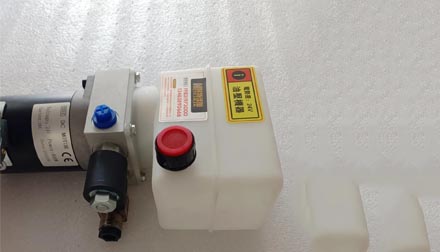Dec . 09, 2024 21:53 Back to list
Tailored Dual Action Power Solutions for Enhanced Performance and Efficiency
Custom Double Acting Power Units An Overview
In the realm of industrial applications, power units play a critical role in the efficient functioning of hydraulic systems. Among the various types of power units available, custom double acting power units stand out due to their versatility and efficiency. This article delves into the features, advantages, and applications of these remarkable systems.
A double acting power unit is designed to provide power in both directions of movement, facilitating a more versatile approach to hydraulic operations. Unlike single-acting systems, which operate only in one direction and rely on external forces, double acting power units use hydraulic pressure to provide movement in both directions, enhancing efficiency and reducing cycle times. This dual capability is crucial for operations that require precise control and rapid response.
One of the key benefits of custom double acting power units is their adaptability. These units can be tailored to meet specific requirements for various applications, allowing industries to optimize their hydraulic systems to suit their unique needs. Customization may involve varying the size, pressure rating, and components of the power unit, ensuring that it can handle the required load and perform efficiently under different conditions.
The design of a custom double acting power unit typically includes several critical components, including a hydraulic pump, a reservoir, control valves, and hydraulic cylinders. The hydraulic pump generates the pressure needed to move hydraulic fluid to and from the cylinders, while the reservoir stores the fluid. Control valves regulate the flow of fluid, enabling precise control over the movement of the actuator. This combination of components allows for smooth, controlled motion in hydraulic applications.
custom double acting power unit

In addition to their adaptability, custom double acting power units offer several significant advantages
. They can improve overall system efficiency by reducing energy consumption and minimizing wear on components. The ability to operate in both directions allows for quicker cycle times, which can enhance productivity and throughput in various industrial processes. Furthermore, these units often feature enhanced safety measures, such as overload protection and pressure relief valves, ensuring safe operation even under demanding conditions.Applications for custom double acting power units are vast and varied. Industries such as manufacturing, aerospace, automotive, and construction frequently employ these units for tasks including material handling, automated assembly, and equipment operation. For instance, in the manufacturing sector, double acting power units are used in hydraulic presses that require consistent force in both the pressing and returning phases. In the construction industry, they power excavators, allowing for the smooth excavation and loading of materials.
Moreover, the increasing focus on automation and efficiency in modern industrial operations has led to a growing demand for these power units. As companies seek ways to streamline processes and reduce operational costs, the versatility provided by custom double acting power units makes them an attractive option. When integrated with modern control systems, they can facilitate advanced automation techniques, further enhancing productivity.
As industries continue to evolve, the role of custom double acting power units will undoubtedly become more prominent. Their ability to provide efficient, reliable power for a range of applications positions them as essential components in many hydraulic systems. Moreover, with advancements in technology and engineering, the customization potential of these units will expand, allowing companies to achieve even greater levels of efficiency and performance.
In conclusion, custom double acting power units are vital assets in the landscape of hydraulic systems. Their adaptability, efficiency, and capability for precise control make them indispensable in various industrial applications. As industries embrace the future of automation and efficiency, the importance of these power units will only grow, solidifying their role as a cornerstone of modern hydraulic technology.
-
Fork Lift Power Units - Hebei Shenghan | Efficiency, Reliability
NewsJul.13,2025
-
1.5-Ton Turbocharged Cylinder-Hebei Shenghan|Hydraulic Solution,Energy Efficiency
NewsJul.13,2025
-
Auto Hoist Power Units-Hebei Shenghan|Efficiency&Industrial Lifting
NewsJul.13,2025
-
Double Acting Power Units-Hebei Shenghan|Hydraulic Solutions,Industrial Efficiency
NewsJul.13,2025
-
1.5 Ton Lifting Cylinder 70/82-40-290-535 - High-Performance Hydraulic Solution | Hebei Shenghan
NewsJul.13,2025
-
Fork Lift Power Units - Hebei Shenghan | Efficiency&Reliability
NewsJul.13,2025
